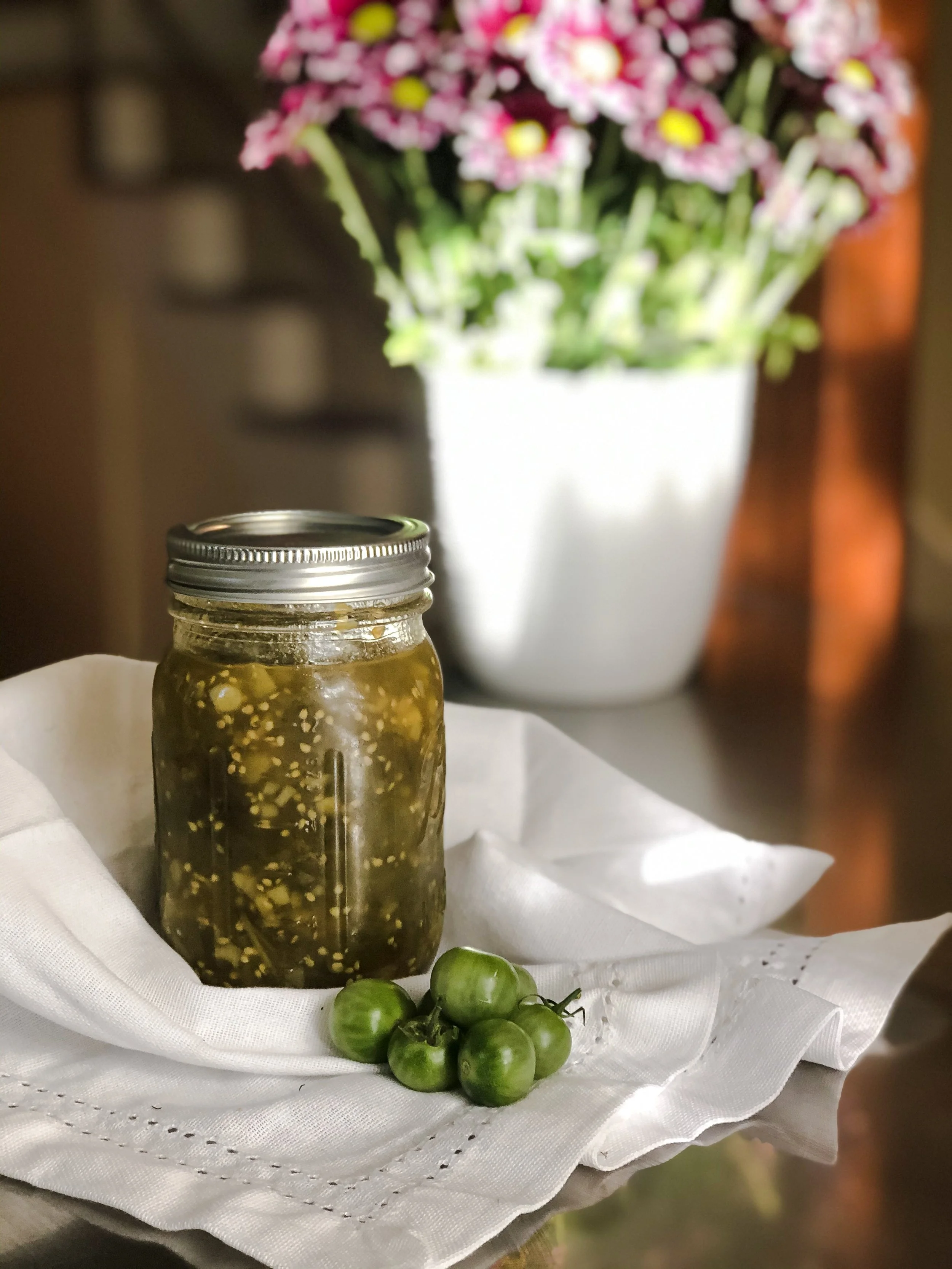Waste Not, Want Not: A Green Tomato Rescue
Photo by Rachel Amiralian
I have always loved tomatoes.
Like many New England families, we made them a staple in our backyard garden. As a little girl, I spent summer days working the soil with my dad, sun-kissed and joyful, pulling little cherry tomatoes straight off the vine and right into our mouths. I still love the way the skin feels popping between my teeth, bursting with a sweet, acidic flavor.
But what did we do at the end of tomato season? Where did all the green ones go?
About a week ago I went to my dad’s house, the same home I grew up in. As I approached his backyard, memories rushing back, it was clear that summer was really over. I stepped over fallen leaves, filled my lungs with crisp, autumn air and felt the little hairs on my arms rise as October’s breeze grazed my neck. The wet grass from the previous night’s torrential downpours brushed against my ankles, and then I saw it: His beautiful tomato vines sprawled out against the wet concrete, cast aside like a Halloween skeleton on the first of November. What? But why?
Had they blown over in the storm, I asked? No, he replied curtly. He was getting rid of them. Their season was done. The frost was on its way.
I was horrified. And to be honest, a little confused. These beautiful plants were still full of fruit—not the succulent ripe, red tomatoes so prized in August, but their smaller, tart-green precursors. I dropped to the ground, salvaging as many emerald treasures as I could. Making my shirt into a makeshift pouch, just as I did harvesting ripe ones as a kid, I collected the last offerings these beautiful plants had to give. My dad stared in amazement as I kneeled in the damp grass, rambling on about how food waste is at an alarming high—these beauties were not destined for the compost bin or to be forgotten on a windowsill! There was still a delicious future for them in sight. But what could I do with unripe green tomatoes—besides just frying and pickling them?
My boyfriend had the answer. He is a chef at a farm-to-table restaurant in the Boston suburbs where sourcing from local farmers is paramount and nothing is ever wasted. On his days off, we cook. At first, I was just a spectator, sipping wine and swaying to the music. But before long I was peeling and chopping, still dancing but too preoccupied to hold a glass.
In our home, we adhere to our own set of principles regarding food: Buy it with thought, home grown is best, cook it with care, serve just enough. Save what will keep, eat what would spoil, things you can’t eat, return to the soil. This mantra inspires us to be completely aware of the impact our diet has on our bodies and the environment. It has served us well throughout the changing seasons as ingredients come and go and we want to preserve the seasonal bounty to enjoy through the colder months.
So we applied these principles of conservation to the unripe tomatoes from my dad’s garden. We cooked some of them down into a glaze and fortified it with local honey. Astringent and floral, subtly sweet, it goes perfectly with pork. Then, to satisfy my sweet tooth, we cooked the glaze down further into a caramel with more green tomatoes, and baked them into a crisp. We were pleasantly surprised by this unlikely dessert: It’s buttery and decadent, with a silky mouthfeel and a pleasant acidity from the tart, unripe fruit.
The rest of the tomatoes we cooked into a jam and canned it for later use. This was my dad’s favorite preparation. A splash of cider vinegar accentuates the tartness, while a blend of sugar, honey and spices brings out wonderfully floral tomato-y notes. It’ll be perfect on a hot, buttered biscuit in the dead of winter. Dad will never throw out his green tomatoes again.
The moral of this story is: We still have time, people! We haven’t had a hard frost yet and there are still green tomatoes left to harvest. Some local farm stands are even selling them. Here are four ways to waste less and hold on to summer a little longer.
This story appeared as an online exclusive in October 2019.





